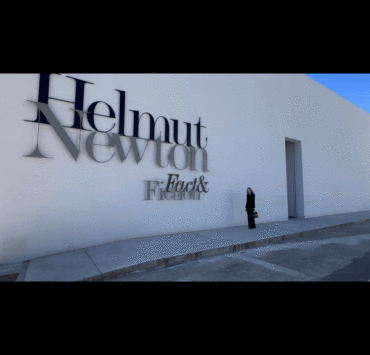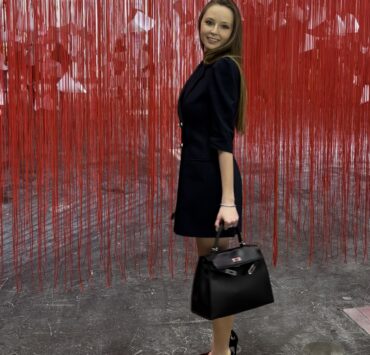Spain Just Got a Digital Goya – And It’s Thanks to Daniel Canogar
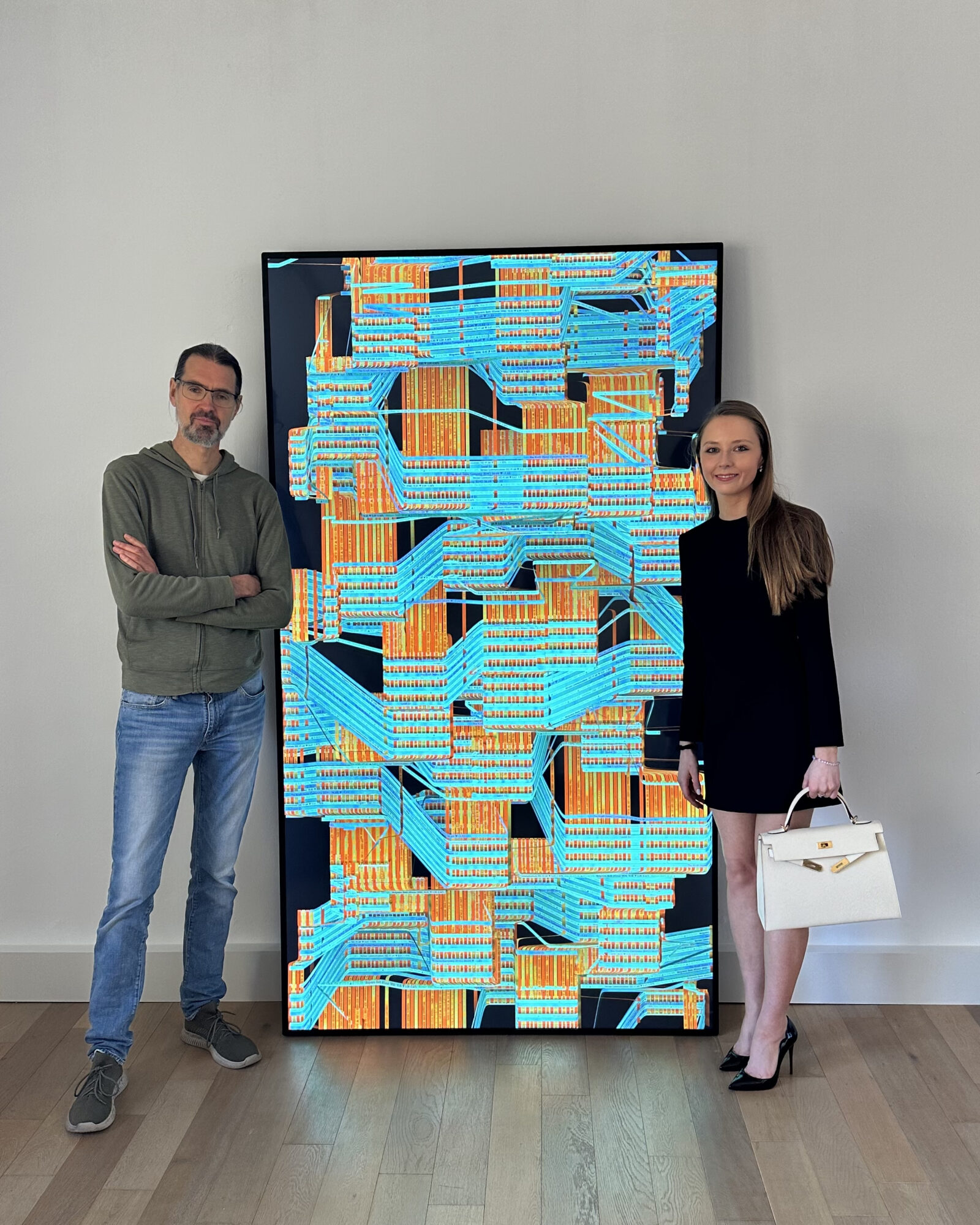
Director and Founder, RGNN.org.
Welcome to The Director’s Cut, an interactive column featuring fashion, beauty and career advice from RGNN Director and Founder, @isabelevabohrer.
Times Square in New York. The Serena Williams Building at Nike’s World Headquarters in Oregon. Spain’s Pavilion at Expo Dubai. Tampa International Airport in Florida. The Prado Museum in Madrid. The list of places Daniel Canogar has taken over with his digital art goes on and on. Now, he has done it again, at Madrid’s Royal Academy of Fine Arts of San Fernando for another special occasion, International Museum Day.
“On May 18, 2024, Goya will be converting our facade into a huge canvas,” wrote the Royal Academy to announce the spectacle. But the Instagram post hardly does the real thing justice. People from all over the world stopped short upon seeing the facade light up with Goya’s works in all of its splendor. The projection moreover was seamless; usually a work of this calibre would requires a bulky scaffolding, but this time, the light sources were hidden in no other building than the Four Seasons hotel right in front of the Royal Academy. Brilliant. I’ll try to replicate it here with a few photos and videos below, but they don’t measure up to par either.
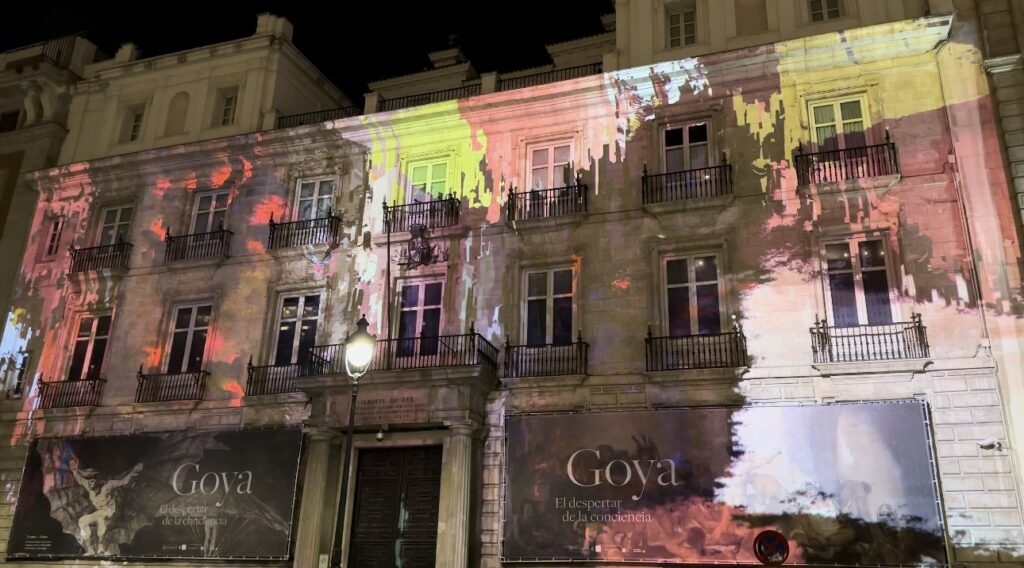
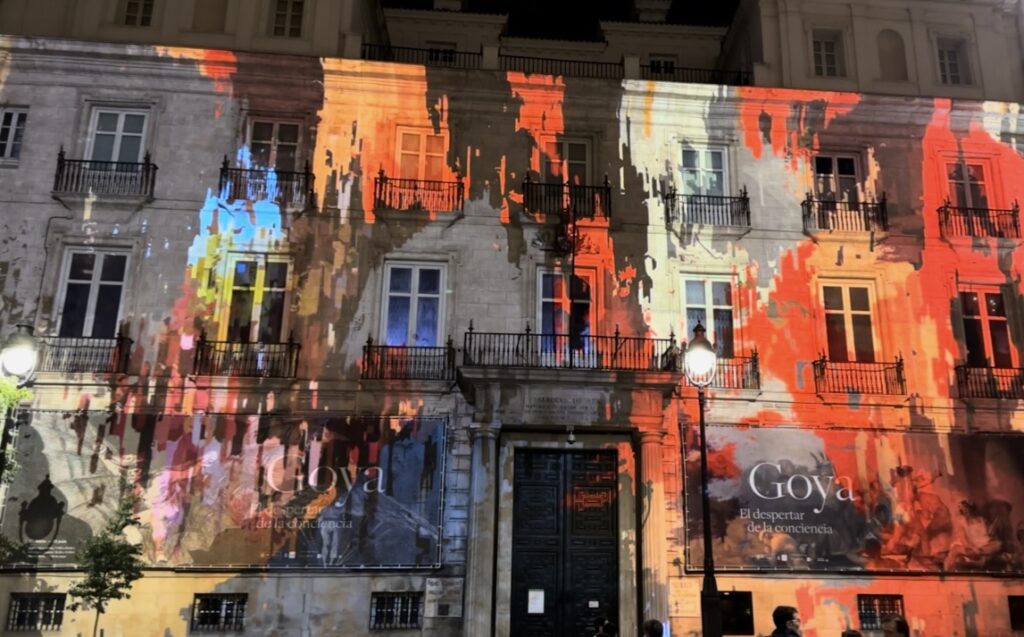
“Maelstrom San Fernando” is the name of the generative piece of art that Canogar projected onto the historic building of the Royal Academy last night. Generative? Let me explain, because to prep, we went out to see it all, not only once but two times before, first to the Royal Academy’s current Goya exhibition, and then, behind the scenes at Canogar’s studio in Madrid.
“Maelstrom San Fernando” is a combination of two of Canogar’s previous works, “Chroma” and “Amalgama,” he clarified to us as we sat on his sofa and sipped on freshly brewed coffee. “Chroma” is based on algorithmic rules, the work never repeats itself, there are always new combinations – hence generative. Just as in today’s world; when it comes to technology, the news, social media and 21st century life in general, there is always more, 24/7.
So, too, are the variations generated of works from the Royal Academy’s collection, just like in “Amalgama,” which was projected onto the Prado museum’s facade for the institution’s bicentennial anniversary, and featured infinite variations of works from the Prado’s collection. Like “Amalgama,” “Maelstrom San Fernando” is a reflection on today’s new reality, a dialogue between the past and the present.
All paintings started with wet materials, the paint on the canvas, according to Canogar. It’s about the concept of the file; when you see the digital version of a painting, it loses its materiality and becomes liquid. Liquidity, a metaphor for the Internet and the flow of data, which can disappear under the touch of your fingertips. Canogar’s real dream is that one day, one of his works will be shown permanently. Not just temporarily, one night, for three hours on a museum facade. One day, you’ll get there, I told him reassuringly.
In the meantime, Canogar’s work is his way of processing reality, of making the ephemeral eternal. And that reality encompasses far more than the digitalization of museum archives. He is deeply preoccupied with the news, and his works can make quite the political statements. Take “Wayward,” for example, a piece in which he intends to make his mark on the news cycle. This work, too, is constantly evolving, drawing on data from 40 news agencies (via Yahoo! News, which combines them all), as well as Canogar’s own footprint; he digitalized his own brushstrokes, for example, and you can see them pop up on the screen every now and then in different forms.
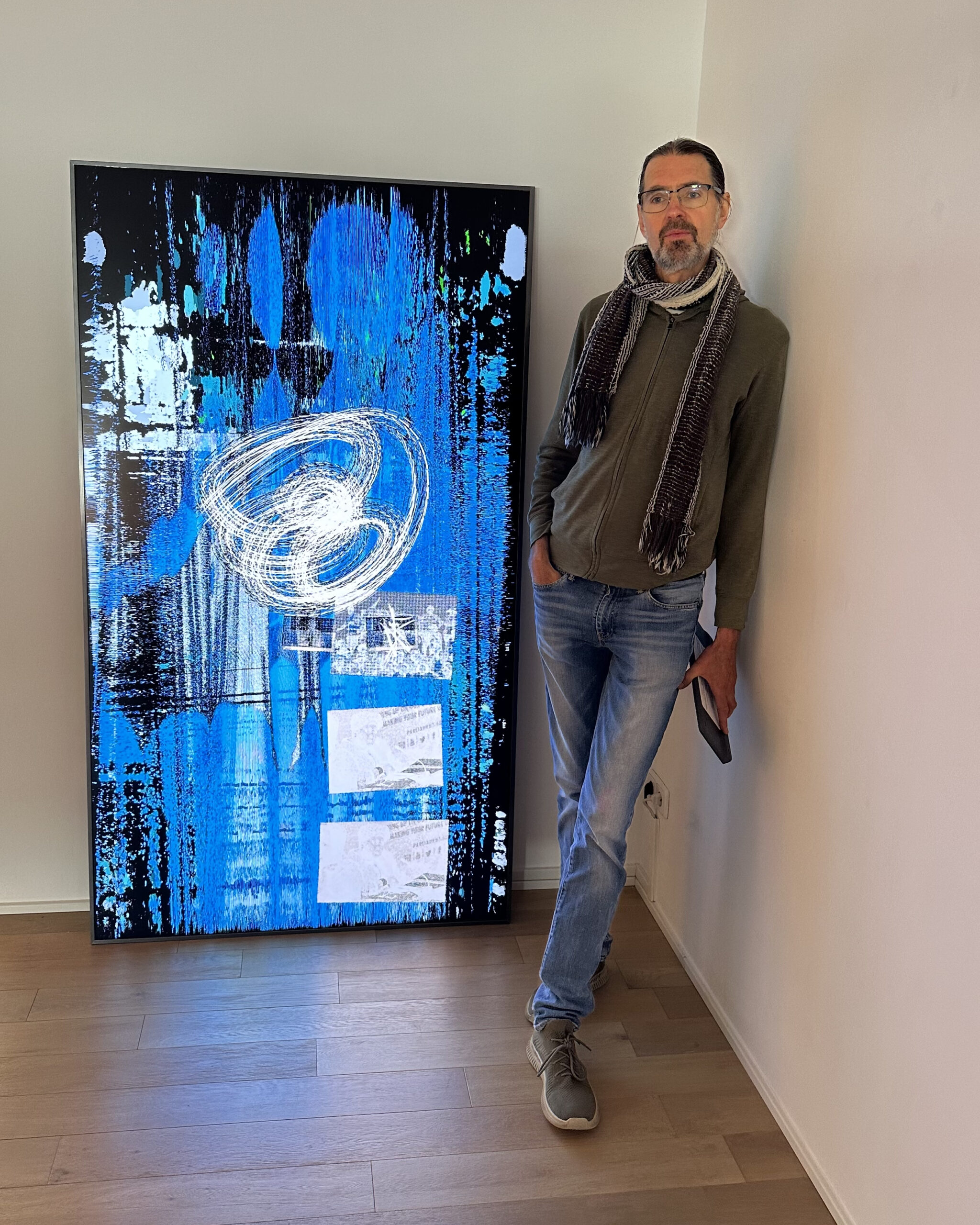
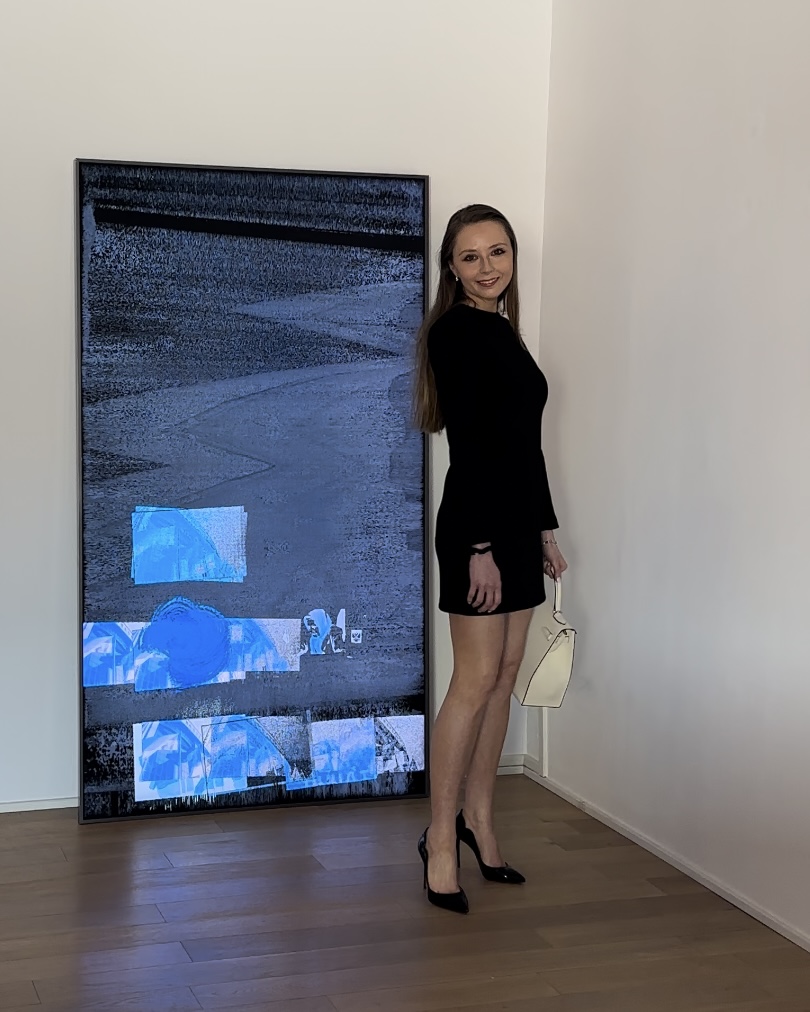
Out on his coffee table lies a book of textile patterns. Fashion, too, has left its footprint on Canogar’s work. The book is the inspiration behind his “Pixel Weaver” series. Textile patterns are algorithms, too, after all. And so, on screen, he pulls up “Chyron,” another work in which a journalistic textile is woven, again based on the news published by the BBC, CNN and Al Jazeera, amongst others.
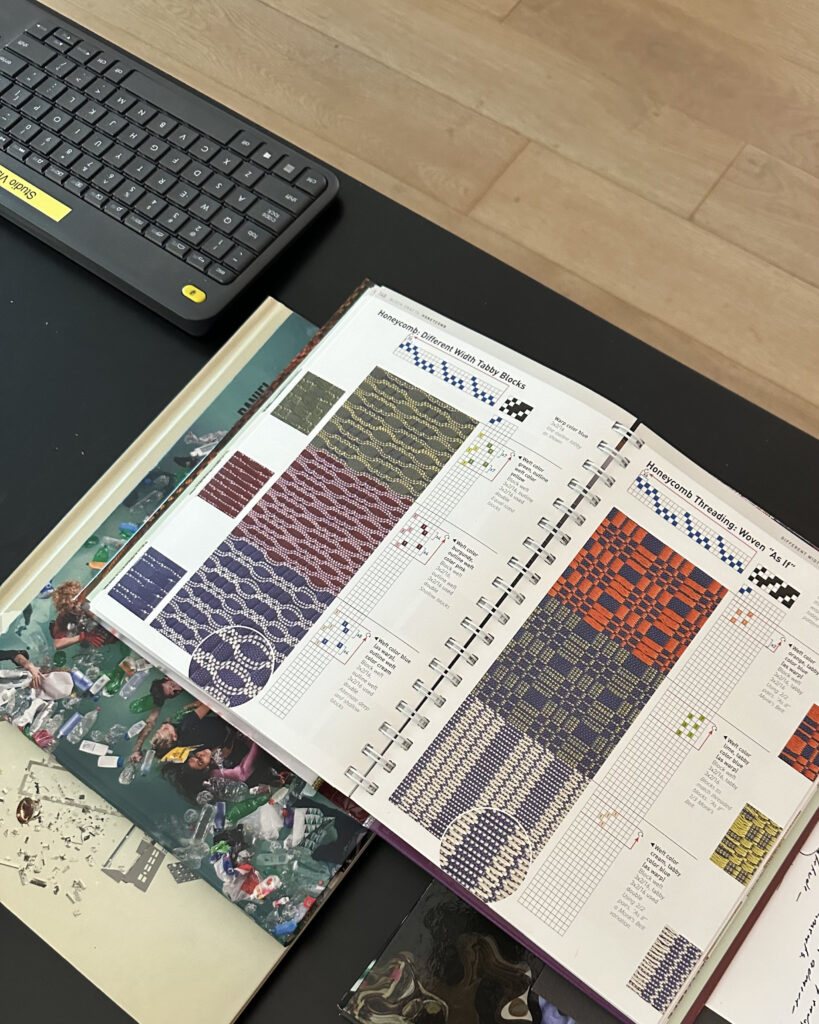
To notice all of these connections, however, you really have to scratch beneath the surface. And that is what Canogar hopes people do. In fact, it’s the “bonus” element his works offer. To explain, he hits pause on “Effulgence,” another one of his generative pieces, this time inspired by Mark Rothko. We all reminisced shortly about the fantastic blockbuster exhibition we recently came back from at the Louis Vuitton Foundation in Paris (Canogar had gone, too, as he was wrapping up production of “Effulgence” and for my own recap, you can read it here).
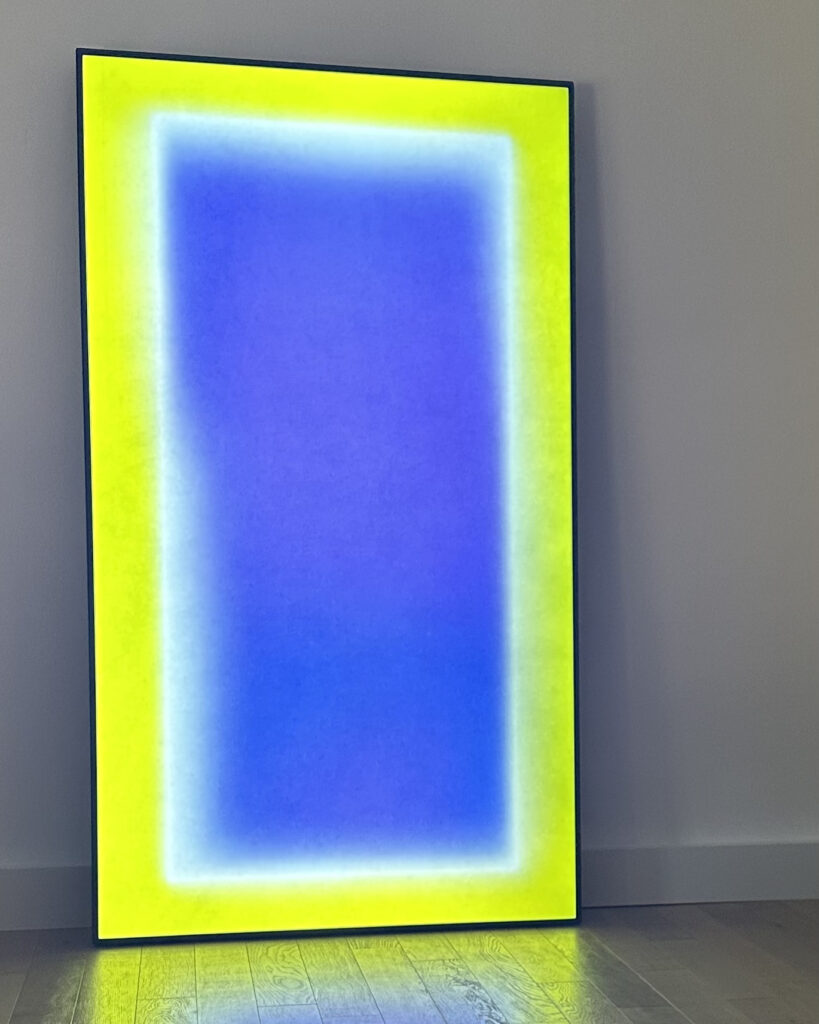
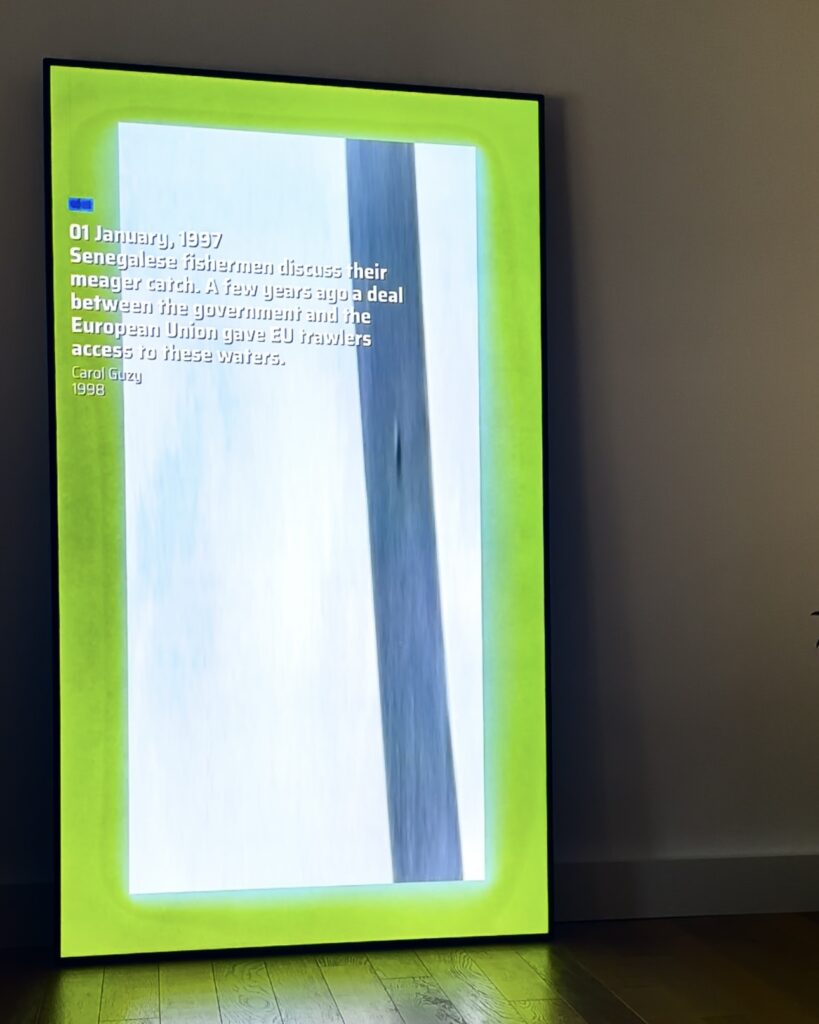
But then, he hits another button on his keyboard and an explanatory text comes up. The Rothko-like digital compositions are inspired by images from the World Press Photo catalogue. The subjacent collector gets a “bonus,” a private experience that cannot be revealed unless you have the keyboard to control the work of art. He or she can moreover pause the work at any given moment in time and “save” that image, keeping in mind that because of the ever-changing algorithm, it would never be the same again. Canogar himself paused “Wayward” at several moments, for example, and his selected, saved images are hung up in his studio.
“Effulgence” is the type of work Canogar is working a lot on now. Yet again, when you scratch beneath the surface, his work is deeply rooted in traditional photography, – he holds an M.A. from NYU at the International Center of photography,- and art history as a whole. It was in the 19th century that the spectator was born, and what we know now as such visual consumption really ensued. Moreover, Canogar only ever makes seven copies of his works for sale. Why seven? Because historically speaking, when it comes to grabados, -which translates broadly as engravings or etchings,- that’s how many are considered originals, he explains. As precisely one person would know: Francisco de Goya, the master of grabados.
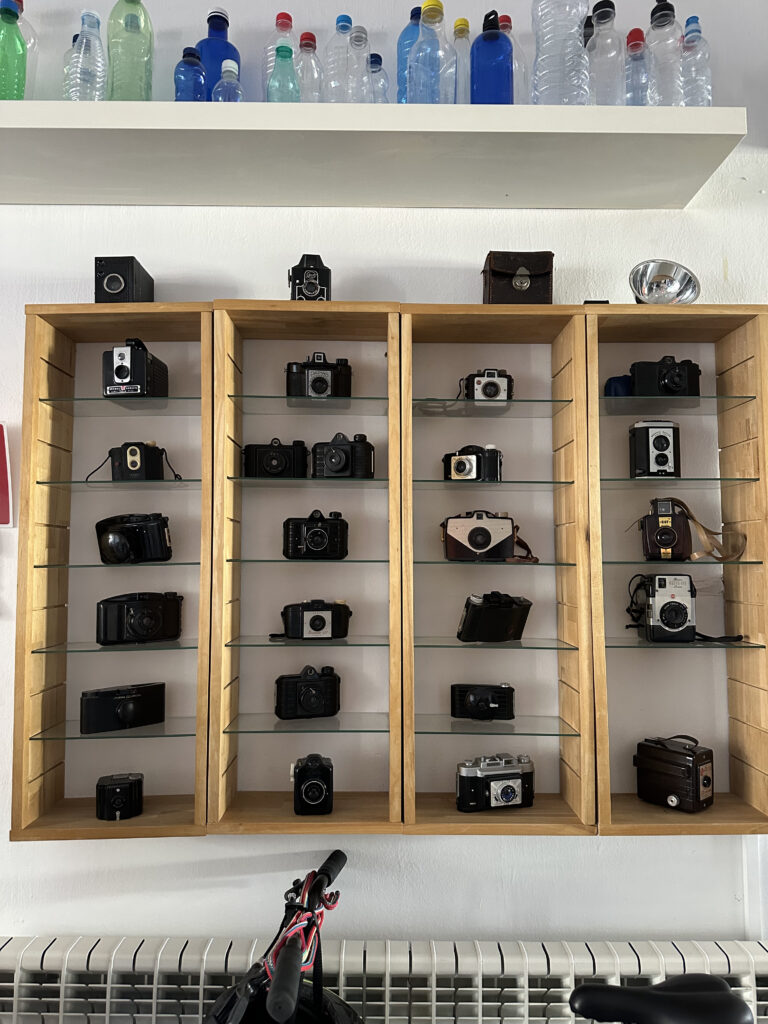
What’s next for Daniel Canogar? We were wrapping up our studio visit, and he had to get on a call. Balenciaga just contacted us, his assistant Victoria whispered. Like in all of his generative projects, there is always more – and it’s always exciting. I certainly can’t wait to follow Canogar’s promising artistic trajectory. And as a fashion lover, if he makes another creative leap into the fashion industry, I will be there to see it all, too.
More information
- Royal Academy of Fine Arts of San Fernando. Calle Alcalá 13, 28014 Madrid.
- The “Goya and the Awakening of Consciousness” exhibition will be on view until June 23, 2024.
- More information and tickets can be bought on the official website.
- If you are in Madrid and would like to see another of Daniel Canogar’s work, he will be part of a group show titled “Miradas que comunican” at the Espacio Fundación Telefónica from June 11, 2024 to January 12, 2025. More information can be found here.
- To stay up to date on other upcoming exhibitions/projects, visit Daniel Canogar’s website here.
Thank you to the Royal Academy for inviting us to the Goya exhibition, and to Daniel Canogar for taking us behind the scenes at his studio.
Questions or comments? Follow me on IG @isabelevabohrer or TikTok and say hi! See you soon!


